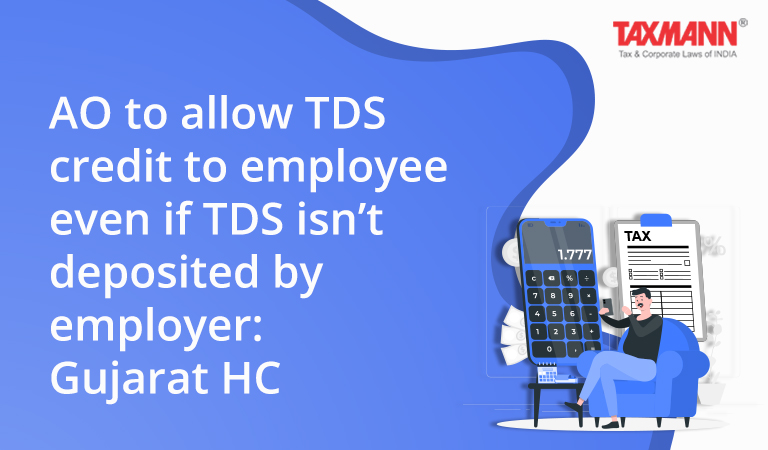AO to allow TDS credit to employee even if TDS isn’t deposited by employer: Gujarat HC
- Blog|News|Income Tax|
- 2 Min Read
- By Taxmann
- |
- Last Updated on 30 November, 2021

Case Details: Kartik Vijaysinh Sonavane v. DCIT - [2021] 132 taxmann.com 293 (Gujarat)
Judiciary and Counsel Details
-
- Ms. Sonia Gokani and Ms. Nisha M. Thakore, JJ.
- Darshan R. Patel for the Petitioner.
- Varun K. Patel for the Respondent.
Facts of the Case
Assessee was a pilot by profession and employee of Kingfisher Airlines. The Kingfisher Airlines had tax at source (TDS) from the salaried income of the assessee for the Assessment Year 2009-10 and 2011-12. However, the said TDS amount had not been deposited by the Airlines in the Central Government Account.
Accordingly, the TDS credit as claimed by the assessee was not given by the Assessing Officer (AO). AO raised demand along with interest and also initiated recovery proceedings. The assessee filed writ petition before the Gujarat High Court against recovery notices.
The Gujarat High Court has relied upon the ruling delivered by the Gauhati High Court in the case of Om Prakash Gattani [2001] 117 Taxman 549 (Gauhati). The Court held that a perusal of Section 205 clarifies the position where it provides that where tax is deductible at source, the assessee shall not be called upon to pay the tax himself to the extent to which tax has been deducted from that income.
Further, if the amount has been deducted but not paid to the Central Government, that eventuality is taken care of by Section 201 of the Income-tax Act. AO could not show that under the law, it may be permissible to proceed against the assessee even after deduction of the tax at source.
High Court Held
The Gujarat High Court allowed the petition of the assessee and held that no separate reasoning was desirable. The department is precluded from denying the benefit of the tax deducted at source by the employer during the relevant financial years to the assessee.
The credit of tax shall be given to the assessee, and if in the interregnum any recovery or adjustment is made by the AO, the assessee shall be entitled to the refund of the same along with the statutory interest.
Disclaimer: The content/information published on the website is only for general information of the user and shall not be construed as legal advice. While the Taxmann has exercised reasonable efforts to ensure the veracity of information/content published, Taxmann shall be under no liability in any manner whatsoever for incorrect information, if any.

Taxmann Publications has a dedicated in-house Research & Editorial Team. This team consists of a team of Chartered Accountants, Company Secretaries, and Lawyers. This team works under the guidance and supervision of editor-in-chief Mr Rakesh Bhargava.
The Research and Editorial Team is responsible for developing reliable and accurate content for the readers. The team follows the six-sigma approach to achieve the benchmark of zero error in its publications and research platforms. The team ensures that the following publication guidelines are thoroughly followed while developing the content:
- The statutory material is obtained only from the authorized and reliable sources
- All the latest developments in the judicial and legislative fields are covered
- Prepare the analytical write-ups on current, controversial, and important issues to help the readers to understand the concept and its implications
- Every content published by Taxmann is complete, accurate and lucid
- All evidence-based statements are supported with proper reference to Section, Circular No., Notification No. or citations
- The golden rules of grammar, style and consistency are thoroughly followed
- Font and size that’s easy to read and remain consistent across all imprint and digital publications are applied




